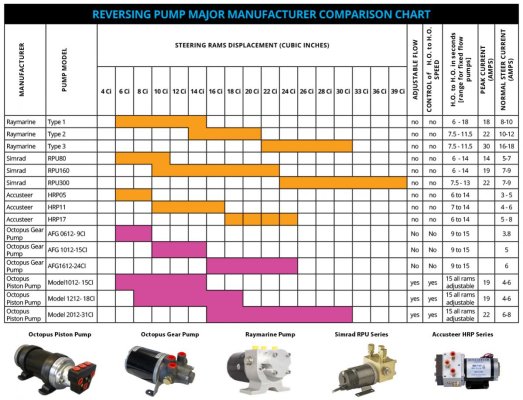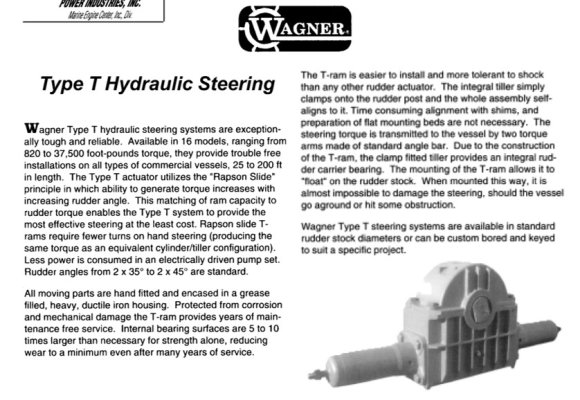mvweebles
Guru
- Joined
- Mar 21, 2019
- Messages
- 7,223
- Location
- United States
- Vessel Name
- Weebles
- Vessel Make
- 1970 Willard 36 Trawler
I'm installing Simrad nav system. Thinking of going with their A/P system. Question: are A/P pumps proprietary to the system (e.g. Simrad, Furuno, Raymarine, etc.), or can a generic A/P pump be used such as the Octopus (shown HERE from Hodges Marine). The Simrad version is over $1000 vs $625 for the Octopus (or other - both for up to a 30-inch cylinder).
Thoughts? Are these interchangeable? I would think so with correct fittings - it's just a reversible pump, right?
Thanks in advance - Peter
BTW - my boat has a Wagner T-Ram drive system. No idea what the cubic inch capacity is, but assume it's well under 30 cubic inch.
Thoughts? Are these interchangeable? I would think so with correct fittings - it's just a reversible pump, right?
Thanks in advance - Peter
BTW - my boat has a Wagner T-Ram drive system. No idea what the cubic inch capacity is, but assume it's well under 30 cubic inch.

 David
David
